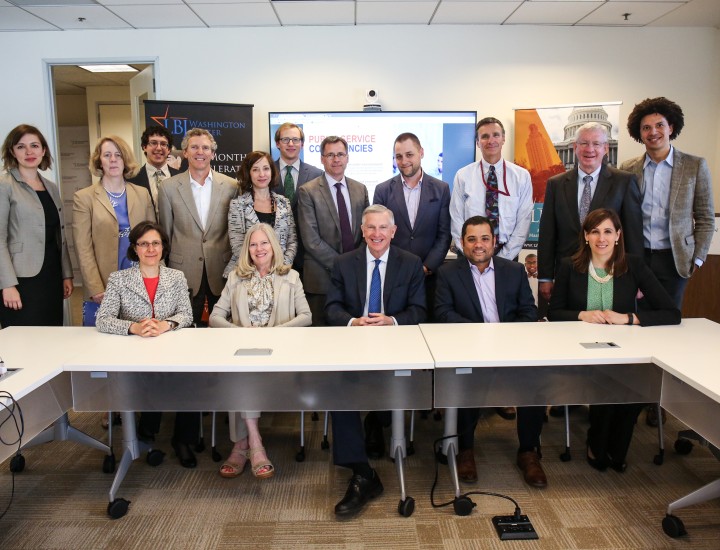The Pandemic’s Big Takeaway: It Matters Who Fills Government Jobs

[This op-ed was originally published in Government Executive.]
The coronavirus pandemic is terrifying. It has shaken and disrupted our lives, altering the way we think about day-to-day routines, our families, our colleagues, and our communities. The pandemic is also making it strikingly clear that the survival and security of people everywhere depends on government.
The success of our response to this historic public health emergency hinges in large part on the talent, preparedness, and dedication of our government workforce. Inspiring examples of our public servants hard at work during this crisis abound—from first responders, doctors, and healthcare workers who are at the ready to provide care for their neighbors, even at great risk to their own health; to teachers who have swiftly adapted coursework to support virtual learning; to governors, mayors and many other state and local leaders who are taking necessary, but often difficult steps to keep citizens safe while also ensuring all of us have the facts we need to make smart choices; to scientists, epidemiologists, and other public health professionals who are urgently searching for medical solutions.
I lead a nonprofit organization founded by a great American public servant, Paul A. Volcker, whose brave, resolute leadership is credited with leading the nation through the economic crisis brought on by stagflation in the late 1970s. In these difficult times, I urge everyone to pause long enough to acknowledge and appreciate the public servants whose courageous service—as Mr. Volcker’s was—will be instrumental in leading our nation through to the other side of this crisis.
The coronavirus pandemic should be a lesson to each of us about the imperative of government and those who serve within it. While it is hard to see beyond the immensely challenging circumstances before us today, our nation has for some time been facing an urgent public sector workforce crisis. Twenty-three percent of the private sector workforce is under the age of thirty, while only 7 percent of the federal government workforce is under that age. In the last five years, the number of job postings for state government employment has risen 11 percent, even as total applications have fallen by 25 percent. Federal, state, and local governments will see a doubling of the percent of their workforce eligible to retire in the next five years.
This chapter of our nation’s history underscores the need to inspire and engage talented citizens in service to the public good. The United States must excel in the development of its current and future public workforce if it is to deliver results that matter to citizens—not only in the face of formidable crises, but also in times of prosperity and calm. After these difficult times recede, we must shift attention to the future of our government. Our well-being as a society—our health, safety and security—is dependent on our government working effectively through a prepared, talented workforce dedicated to the common good.



